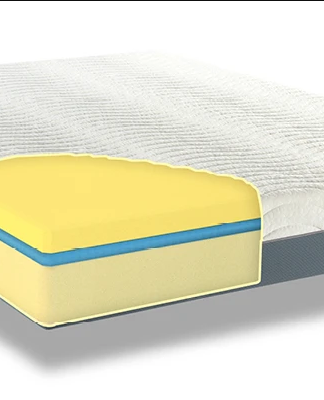Do you have misaligned or crooked teeth? Does your smile make you self-conscious? If the answer is yes, then an orthodontist may be able to help. But do you know what an orthodontist is and what they do?
Orthodontics is a specialized field of dentistry that focuses on correcting dental irregularities, such as misaligned teeth and improper bites. Orthodontists receive extensive training and education beyond that of a general dentist to become experts in this field.
If you’re considering orthodontic treatment, it’s important to understand what an orthodontist does and how they can help you achieve the smile you’ve always wanted.
What is an orthodontist, and what is their role in diagnosing and treating misaligned teeth and jaws?
An orthodontist is a dental specialist who focuses on diagnosing and treating misaligned teeth and jaws. Their primary goal is to improve the patient’s oral health and overall appearance by straightening their teeth and correcting their bite.
Orthodontists use various techniques and tools, such as braces, aligners, and retainers, to realign teeth and jaws properly. They also examine the patient’s facial structure and overall dental health to develop a personalized treatment plan that suits their specific needs.
Orthodontists play a crucial role in enhancing a patient’s quality of life and boosting their self-confidence by giving them a healthy and beautiful smile.
What are the common orthodontic problems they treat?
Orthodontic problems affect many people, and orthodontists are professionals who specialize in treating such issues. Orthodontics involves the use of various dental appliances such as braces, retainers, and aligners to correct issues like misaligned teeth, crowded teeth, and other bite problems.
Here are the common orthodontic problems that orthodontists treat:
1. Malocclusion
is a dental term that refers to teeth misalignment. It is a common orthodontic problem affecting the way the upper and lower teeth fit together. There are different types of malocclusion such as overbite, under bite,cross bitee, and open bite. Orthodontic treatment such as braces or aligners can correct malocclusion.
2. Crowding
It is another common orthodontic issue that arises when there is not enough space in the mouth for all the teeth. Crowding can cause dental problems such as misalignment, difficulty in cleaning teeth, and jaw pain. Orthodontic treatments such as braces can help in easing the crowding of teeth.
3. Spacing
Spacing occurs when there are gaps between teeth, which can be either due to missing teeth or an overabundance of teeth. Spacing can lead to dental issues such as gum disease and improper teeth cleaning. Orthodontic treatment such as braces, aligners, or bonding can close the gaps between teeth.
4. Protruding teeth
It is also known as buck teeth, are an orthodontic problem where the upper front teeth protrude significantly over the lower teeth. This can cause problems with biting, speech, and self-confidence. Orthodontic treatment such as braces can correct the alignment of the teeth.
5. Crossbite
Crossbite is an orthodontic issue where the upper teeth bite inside the lower teeth due to a misalignment of the jaws. Cross bite can lead to uneven wear of teeth, gum disease, and other dental issues. Orthodontic appliances such as braces or expanders can help in correcting cross bites.
Orthodontic treatment is essential to correct various dental problems and improve overall oral health. If you are experiencing any orthodontic issues, consider consulting an orthodontist for proper diagnosis and treatment. A trained orthodontist can provide customized treatment plans to address your specific dental issues and help you achieve a healthy, beautiful smile.
How do they plan and customize treatment options?
Are you or your child in need of orthodontic treatment? If so, you may have wondered about the process and how orthodontists plan and customize treatment options specifically designed for each patient.
Here’s a comprehensive guide about how orthodontists plan and customize treatment options:
Orthodontic Consultation
The first step in planning any orthodontic treatment is to schedule a consultation with an orthodontist, who is a specialist in diagnosing, preventing, and correcting irregularities in tooth and jaw development. During the consultation, the orthodontist will evaluate the patient’s teeth, bite, and jaw function to determine the best course of action.
Diagnostic Imaging
Once the orthodontist has determined the patient’s orthodontic needs, he or she will take diagnostic images of the teeth, jaw, and surrounding structures. Images may include X-rays, photographs, and impressions of the teeth. This information helps the orthodontist accurately plan the patient’s treatment.
Developing a Treatment Plan
After the consultation and diagnostic imaging, the orthodontist will develop a customized treatment plan specifically tailored to the patient’s needs. Depending on the patient’s condition, the treatment may involve braces, clear aligners, or other orthodontic appliances. The orthodontist will also determine the length of treatment, including the frequency of follow-up visits to make any necessary adjustments.
Choosing the Right Appliances
When it comes to orthodontic appliances, there are many options to choose from. Some of the most common appliances include traditional metal braces, clear braces, lingual braces, and clear aligners. The orthodontist will choose the most appropriate appliance(s) based on the patient’s specific orthodontic needs and lifestyle preferences.
Heavy Focus on Patient Comfort
Orthodontists understand that the orthodontic treatment process can be uncomfortable, which is why they make patient comfort a priority. They will work closely with patients to ensure that treatment options and schedules accommodate their day-to-day routines. Additionally, orthodontists may use oral sedation or other techniques to help patients feel as comfortable as possible during each appointment.
Post-Treatment Follow-up
Once the orthodontic treatment is complete, the orthodontist will create a retention plan to help maintain the results achieved by the treatment. This may include regular retainer use, follow-up appointments, or additional orthodontic treatment to achieve the best results possible.
Orthodontic treatment is an excellent way to correct irregularities in tooth and jaw development. Orthodontists carefully plan and customize treatment options to help patients achieve their desired results. We work closely with our patients to ensure that orthodontic treatment is as comfortable and effective as possible.
How do orthodontists ensure patient comfort during treatment?
Orthodontists take every step necessary to ensure that their patients are comfortable during treatment.
One of the most important aspects of this is communication – they take the time to explain each step of the treatment process to their patients to ensure that they feel informed and at ease. They provide a variety of comfortable, customizable braces options that limit discomfort during treatment.
Finally, they also offer pain management techniques such as ice packs and over-the-counter pain relievers to ensure that patients can maintain their comfort throughout their treatment.
Overall, orthodontist takes patient comfort seriously and works hard to ensure that each patient feels relaxed and confident throughout their orthodontic journey.
Set an Appointment With an Orthodontist Today!
If you are looking to improve your smile, then it’s time to set an appointment with an Orthodontist today! An Orthodontist can provide you with expert guidance on the best way to correct any misalignment or crowding issues you may have.
With specialized training, our Orthodontist can offer you a range of treatment options, including braces, Invisalign, and other orthodontic appliances designed to help straighten and align your teeth. Don’t wait any longer to get the smile you’ve always wanted – schedule your appointment with an Orthodontist today!




















